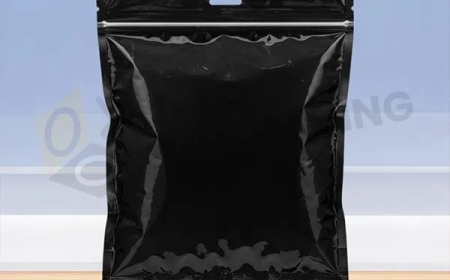The Cultural History of Healing Jewelry Across Civilizations
Jewelry has long been more than just adornment. Across cultures and centuries, it has served as a symbol of status, spirituality, and self-protection. Healing jewelry, in particular, holds a sacred space in the history of human expression. Infused with purpose, intention, and natural materials like crystals and gemstones, it reflects humanitys deep connection with the Earth and its belief in the metaphysical.
At Monk Blessed, this heritage is not only honoredit is actively continued through offerings that merge ancient wisdom with contemporary mindfulness. To understand the power behind healing jewelry today, we look to the past, where cultures across the globe used stones and symbolic adornments for emotional, spiritual, and physical well-being.
Healing Stones in Ancient Egyptian Amulets
The Ancient Egyptians were among the first known cultures to develop a sophisticated spiritual system involving gemstones. Healing jewelry was worn not just for beauty, but as a tool of divine protection and inner strength.
Amulets, often carved with symbols or deities, were created using stones like lapis lazuli, carnelian, and turquoiseeach believed to carry sacred energies. Lapis lazuli was associated with royalty and divine favor, often worn by pharaohs and priests. Carnelian symbolized vitality and was thought to protect the soul in the afterlife. Turquoise, one of the oldest known healing stones, was believed to bring good fortune and dispel negative energy.
These gemstones were worn around the neck, wrists, or sewn into clothing. Their purpose wasnt only metaphysical but also ritualistic; they were buried with the dead, given as offerings to gods, and included in medical treatments. For the Egyptians, healing jewelry was a bridge between the physical and spiritual realms.
Roman and Greek Use of Gemstones for Health and Protection
In Ancient Rome and Greece, gemstones and jewelry also played a vital role in personal health and spiritual balance. Physicians of the timesuch as Pliny the Elderdocumented the therapeutic uses of stones, a practice that blurred the lines between medicine and mysticism.
The Greeks believed that wearing amethyst could prevent drunkenness, hence the name derived from amethystos, meaning not intoxicated. Soldiers wore hematite, a dark iron-rich mineral, believing it would protect them in battle and boost courage. Romans, on the other hand, often engraved their gemstones with protective symbols or mantras, turning rings and pendants into both fashion statements and talismans.
The Roman fascination with astrology also brought forward the idea of birthstones, assigning different gems to planetary influences and personal destinies. This early association between cosmic energy and healing jewelry laid the groundwork for practices still observed today.
Indigenous Traditions and the Sacred Role of Jewelry
Across the Americas, Africa, and Australia, indigenous cultures developed their own deeply spiritual relationships with stones and jewelry. For many of these communities, healing jewelry wasnt merely symbolicit was a living, breathing part of ceremony, community, and connection to the Earth.
In Native American traditions, turquoise was revered as a protective stone and symbol of sky and water. Worn in necklaces, earrings, and belts, it was used in ceremonies to invoke blessings and healing. In some South American cultures, obsidian was carved into jewelry and used in spiritual rituals to ward off negative energy or channel ancestral wisdom.
Aboriginal Australians often used quartz crystals as part of their sacred healing practices, while African tribes would incorporate amber and agate into jewelry meant to protect newborns, warriors, or shamans.
Unlike the commercially driven jewelry of today, these adornments were handcrafted with deep spiritual intent, passed down through generations as a part of cultural identity and communal well-being.
Eastern Philosophies and Chakra-Based Crystal Jewelry
In the spiritual systems of India, China, and other Eastern philosophies, the human body is seen as a network of energies. The concept of chakras, or energy centers, has influenced how healing jewelry is used to balance the mind, body, and spirit.
Indian Ayurvedic traditions assign specific gemstones to different chakras. Amethyst is commonly linked to the crown chakra for spiritual awareness, rose quartz to the heart chakra for emotional healing, and carnelian to the sacral chakra for creativity and vitality. These stones are often worn as malas, bracelets, or pendants to harmonize energies and support meditation practices.
In Traditional Chinese Medicine, jade is considered a stone of health, longevity, and balance. Jade bangles have been worn for centuries, believed to absorb negative energy and protect the wearer from harm.
These traditions continue to inspire modern healing jewelry, which combines visual elegance with the deeper goal of inner equilibrium.
Continuation of Ancient Practices in Modern Healing Jewelry
In todays fast-paced world, healing jewelry has made a resurgencenot as superstition, but as a mindful, intentional practice. At Monk Blessed, this resurgence is thoughtfully rooted in cultural appreciation rather than appropriation, blending timeless wisdom with modern self-care.
Modern wearers of healing jewelry are less concerned with dogmatic beliefs and more interested in how these items make them feel. Crystals like black tourmaline offer a sense of grounding, citrine encourages optimism, and aventurine is worn to invite prosperity and opportunity.
Whether placed on a bedside table, worn as a necklace, or incorporated into meditation, healing jewelry today helps people reconnect to a sense of purpose, calm, and spirituality. These pieces serve as physical reminders to stay present, cultivate positive intentions, and honor ones personal journey.
Ethically sourced materials are also a core value in todays conscious crystal community. At Monk Blessed, efforts are made to ensure the integrity of each pieceso that the healing it offers is not only energetic but also ethical.
Conclusion
Healing jewelry is rooted in a rich cultural heritage that connects us to timeless practices of spiritual care and self-expression. From the sacred amulets of Ancient Egypt to chakra-balancing malas in India, cultures across the globe have looked to gemstones and symbolic adornments for comfort, protection, and empowerment.
Today, the tradition continuesrefined by personal belief and modern awareness, yet deeply tied to its ancient origins. By wearing healing jewelry, we honor not only ourselves but a lineage of wisdom that spans continents and centuries. In every stone, every design, there lives a storywaiting to support your own.
At Monk Blessed, we believe that healing begins with intention. And with the right toolsgrounded in heritage and heartyou can create moments of mindfulness, magic, and meaningful transformation.































